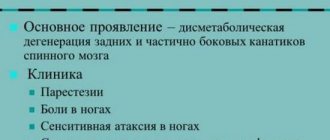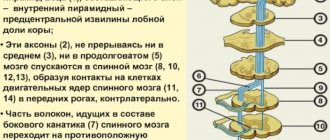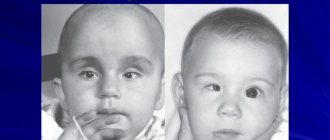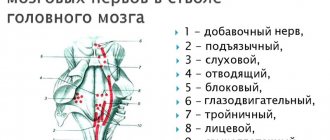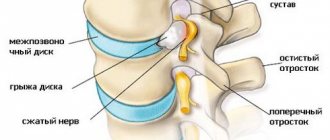Meningitis is an inflammation of the membranes of the brain and spinal cord, affecting the soft arachnoid tissues and the cerebrospinal fluid circulating between them. Also, the development of pathology can affect the roots of the cranial nerves. The infectious disease is widespread throughout the world, especially in temperate geographic areas.
The anomaly is transmitted through the nasopharynx, so winter and early autumn are a more dangerous time of year for infection. The course of the disease can take the form of sporadic (irregular) or epidemic endemic. Most often it occurs in the first year of life, and recedes after four years. The next increase in infection occurs at the end of adolescence.
What is meningism
Meningism is a syndrome that manifests itself in infectious diseases, poisoning and traumatic brain injuries. It is characterized by irritation of the membranes of the brain. Some people confuse the problem with meningitis, but there is a difference in their clinical pictures. The symptoms of meningitis appear clearly and quite clearly.
- Etiology
- Symptoms
- Diagnostics
- Treatment
- Possible complications
- Prevention
Most often, meningism occurs in children with fever; in rare cases, it is diagnosed in adults. According to ICD-10, meningism is coded R29.1.
Meningeal symptoms (signs) in children and newborns
There are certain features in the manifestation of meningeal symptoms in children. As Bekhterev once noted, in newborns Kernig’s syndrome is physiological. It appears a few hours after birth, and is pronounced in the first month of life, and disappears only by the end of the 3rd (rarely 6th) month.
In children under 3 years of age, a pronounced picture of meningeal syndromes is rare. The presence of headaches in infants can only be judged by the child’s general restlessness and crying (monotonous for no reason or screaming during sleep). Vomiting occurs (involuntary or when changing body position). Characteristic symptoms of increased ICP in infants include protrusion, tension of the fontanelles, weak pulsation and their absence.
In children under 3 years of age, just like in adults, stiff neck muscles occur, according to Kernig and Brudzinsky. A distinctive symptom is Lessage or “suspension”: the child is taken by the armpits, the head is supported from behind with the index fingers, and the child is lifted up (positive if the legs are involuntarily pulled towards the stomach and are fixed in a bent state for a long time). Meningeal syndromes in children over 3 years of age are no different from the same syndromes in adults.
Causes of the disease
The human immune system protects the brain very well. But if it happens that with a weak immune system, the infection still gets there, the body still tries to fight it. Paradoxically, this only makes the situation worse.
Due to the fact that at this time red and white cells begin to be produced in excess and enter the brain, inflammatory processes begin that can result in edema. If nothing is done, the access of blood and oxygen to the brain will be blocked. The further development of the infectious disease will worsen.
Clinicians identify the following causes of meningism:
- poisoning by chemical elements;
- allergic reaction to medications used;
- fungal infections;
- the presence of various parasites in the patient’s body;
- benign formations or oncology - boils on the face or neck can cause the syndrome;
- infectious diseases that affect the area adjacent to the brain, for example, otolaryngological diseases;
- diabetes;
- uncontrolled use of medications that affect the immune system;
- unfavorable way of life.
Children's meningism syndrome can even occur due to ARVI and high blood pressure.
Meningitis and meningism
Meningeal syndrome
Clinical aspects of differential diagnosis of meningeal symptom complex (MSC) as the most common and important syndrome in practical infectology remain relevant to the present day.
The main reasons for close attention to this syndrome are: an increase in the number of infectious and non-infectious diseases in which MSC occurs, a high frequency of complications of the pathology manifested by MSC, including deaths, untimely diagnosis and associated delayed treatment of the underlying pathology, leading to disability.
Preclinical diagnosis of MSCs has become particularly relevant in recent years due to the increasing frequency of enterovirus, herpes, arbovirus, meningococcal and other neuroinfections.
Meningeal syndrome
(MS) is irritation of nerve receptors in the pia mater due to its undifferentiated inflammatory process.
Etiologically, the diagnosis (MS) is established based on a combination of the following clinical and pathogenetic syndromes: [1
] infectious disease syndromes (general infectious symptoms: malaise, increased irritability, facial flushing, increased body temperature, shift of the blood count to the left, bradycardia, then tachycardia and arrhythmia, increased breathing, in severe cases - Cheyne-Stokes breathing) [
2
] meningeal (meningeal ) syndrome;
[ 3
] changes in cerebrospinal fluid.
MS underlies the clinical picture of acute forms of meningitis, regardless of their etiology. This syndrome, in combination with general cerebral and often local symptoms, can vary in the degree of severity of its individual components within the widest range.
General cerebral symptoms are an expression of the nervous system’s reaction to infection due to intoxication, cerebral edema, damage to the soft meninges and impaired cerebrospinal fluid dynamics. The main elements of MS are: headache, vomiting, muscle contractures, changes in the cerebrospinal fluid.
However, it should be remembered that, despite the fact that MS is a symptom complex reflecting diffuse lesions of the membranes of the brain and spinal cord, and MS can be caused by an inflammatory process (meningitis, menigoencephalitis), due to different microbial flora (in the case of inflammation, the etiological factor there may be bacteria - bacterial meningitis, viruses - viral meningitis, fungi - fungal meningitis, protozoa - toxoplasma, amoeba), but MS can be caused by non-inflammatory lesions of the meninges. In these cases, the term “meningism” is used. More about the symptom complex of MS
MS consists of general cerebral and meningeal symptoms. General cerebral symptoms include a very intense, painful headache of a bursting, diffuse nature, vomiting, often without preceding nausea, which does not bring relief to the patient; In severe cases, psychomotor agitation, delirium, hallucinations, convulsions, periodically followed by lethargy and impaired consciousness (stupor, stupor, coma).
Meningeal symptoms themselves can be divided into 4 groups. To the 1st group
General hyperesthesia refers to increased sensitivity to stimuli of the sensory organs: light (photophobia), sound (hyperacusis), and tactile.
In severe cases of meningitis, the patient’s posture is very characteristic: the head is thrown back, the torso is extended as much as possible, incl. legs. Within these symptoms, the Fanconi phenomenon is characteristic: (tested with the patient lying on his back): in the presence of a positive symptom, the patient cannot sit up independently in bed with the knee joints extended and fixed; and Amoss’s symptom: the patient can sit in bed only leaning on both hands (in the “tripod” position) and cannot reach the knee with his lips. The 2nd group
of meningeal symptoms includes stiff neck, Kernig's symptom, Brudzinski's symptoms upper, middle and lower (Kernig's symptom: the patient lies on his back with the leg bent at the hip and knee joints at an angle of 90°, due to a painful reaction it is not possible straighten the limb in the knee joint up to 180°; Brudzinski's symptoms (tested with the patient lying on his back): there are upper, middle and lower symptoms, upper: an attempt to tilt the head to the chest leads to flexion of the lower extremities in the knee and hip joints; middle (pubic ): when pressing on the pubis, the legs are flexed (adducted) at the knee and hip joints; lower (contralateral): when the leg bent at the knee and hip joints is passively extended, the other leg involuntarily flexes (pulls up) in the same joints).
Rigidity of the long back muscles causes the patient to be bent backward and unable to bend forward. In children, tension and protrusion of the large fontanel are also observed as a manifestation of intracranial hypertension. When identifying meningeal symptoms, it is necessary to differentiate tonic muscle tension from false muscle rigidity caused by pain (myositis, radiculitis, etc.), which can simulate stiffness of the occipital muscles. The 3rd group
of meningeal symptoms includes reactive pain phenomena: pain when pressing on the eyeballs, at the exit points of the branches of the trigeminal nerve on the face, at the exit points of the greater occipital nerves (Kerer's points);
on the anterior wall of the external auditory canal (Mendelian symptom); increased headache and painful grimace upon percussion of the zygomatic arches (Bechterew's symptom) and the skull (Pulatov's symptom). The 4th group
of meningeal symptoms includes changes in abdominal, periosteal and tendon reflexes: first, their revival, and then an uneven decrease.
Remember
!
Meningism
is the presence of meningeal symptoms in the absence of signs of inflammation in the CSF, with its normal cellular and biochemical composition.
Meningism can occur in the following conditions (diseases): [1
] irritation of the meninges and changes in CSF pressure: subarachnoid hemorrhage, acute hypertensive encephalopathy, occlusion syndrome due to space-occupying processes in the cranial cavity (tumor, parenchymal or intrathecal hematoma, abscess, etc.
), carcinomatosis (sarcoidosis, melanomatosis) of the meninges, pseudotumor syndrome, radiation encephalopathy; [ 2
] toxic process: exogenous intoxication (alcohol, overhydration, etc.), endogenous intoxication (hypoparathyroidism, malignant neoplasms, etc.
), infectious diseases that are not accompanied by damage to the meninges (influenza, salmonellosis, etc.); [ 3
] pseudomeningeal syndrome (irritation of the membranes itself is absent, there is only symptomatology similar to meningeal signs, caused by other reasons: mental [paratonia], vertebrogenic [for example, spondylosis], etc.).
The diagnosis begins in the emergency room of an infectious diseases hospital. If there is no doubt about the presence of meningitis, which is confirmed by the available anamnestic and objective data, a decision is made to urgently perform a lumbar puncture.
A diagnostic spinal puncture should also be performed when the patient is unconscious.
Spinal puncture is delayed if there is a suspicion of the absence of meningitis and the patient has a characteristic clinical triad (headache, vomiting, fever), stiff neck muscles, positive Kernig and Brudzinski symptoms.
A similar picture is characteristic of meningism, which is based on toxic irritation of the meninges. Meningism can be observed in various common acute infectious diseases (influenza, ARVI, pneumonia, dysentery, viral hepatitis, etc.) or during exacerbations of chronic diseases.
An additional sign of meningism can be the dissociation of meningeal syndrome, expressed between the presence of nuchal rigidity and the upper Brudzinski's sign, and the absence of the Kernig's symptom and the lower Brudzinski's symptom.
Differentiation of meningism from meningitis is possible only on the basis of examination of cerebrospinal fluid (CSF). Lumbar puncture reveals an increase in intracranial pressure (up to 250 mm water column) in most patients, with normal cytosis and a slight decrease in protein (below 0.1 g/l). A characteristic feature of meningism should be considered the rapid (within 1–2 days) disappearance of symptoms with a drop in temperature and a decrease in intoxication. The possibility of relapse of meningism with repeated diseases cannot be ruled out.
Conclusion
:
Meningeal syndrome is caused by both an inflammatory process caused by various microbial flora (meningitis, menigoencephalitis) and non-inflammatory lesions of the meninges.
Some infectious and non-infectious diseases occur with the presence of meningeal symptoms, which in turn complicates the correct diagnosis.
The diagnosis should be based on clinical data, taking into account the entire set of clinical, epidemiological and laboratory data, including consultations with specialists.
Remember
!
Pathogenesis
. There are 3 ways of infection of the meningeal membranes: 1. with open craniocerebral and spinal injuries, with fractures and cracks of the base of the skull, accompanied by liquorrhea; 2.
contact, perineural and lymphogenous spread of pathogens to the meningeal membranes with an existing purulent infection of the paranasal sinuses, middle ear or mastoid process, eyeball, etc.; 3.
hematogenous spread.
The pathogenetic mechanisms of clinical manifestations of meningitis include
: 1. inflammation and swelling of the meninges; 2. discirculation in the cerebral and meningeal vessels; 3.
hypersecretion of cerebrospinal fluid and delay in its resorption, which leads to the development of cerebral hydrocele and increased intracerebral pressure; 4.
overirritation of the meninges and roots of the cranial and spinal nerves; 5. general effects of intoxication.
Diagnosis of meningitis is based on identifying the following syndromes
:
general infectious – chills, fever, fever, lethargy (asthenia), tachycardia, tachypnea, inflammatory changes in the nasopharynx, gastrointestinal tract and peripheral blood (leukocytosis, increased ESR, etc.), sometimes skin rashes;
general cerebral – headache, vomiting, general hyperesthesia (to light, sound and touch), convulsions, disturbance of vital functions, changes in consciousness (psychomotor agitation, depression), bulging and tension of the fontanelle;
meningeal (meningeal) – meningeal posture (“pointing dog posture”), rigidity of the neck muscles, Kernig’s, Brudzinski’s symptoms (upper, middle, lower), Le Sage’s “suspension” symptom in children;
inflammatory changes in the cerebrospinal fluid - cell-protein dissociation - an increase in the number of cells (neutrophils in purulent and lymphocytes in serous meningitis) and protein, but to a lesser extent than the cell content.
Source: //laesus-de-liro.livejournal.com/374053.html
Symptoms of the disease
All signs indicating meningism occur quickly, so it will not be difficult for the doctor to recognize them.
Symptoms of developing meningism:
- a sick child has chills that turn into fever;
- mental disorders: confusion, amnesia, sometimes mental disorders appear;
- nausea, sometimes with severe vomiting;
- photophobia occurs - children in this case lie with their faces turned to the wall, completely covered with a blanket;
- very severe pain in the head, the patient reacts painfully to sounds, movements and light - limited movements appear when bending the neck, sometimes it even becomes impossible;
- it is impossible to straighten a leg that is bent at the knee;
- if you put the patient on the bed and try to tilt him towards his chest, his legs themselves will begin to bend at the knees;
- the nasolabial triangle becomes pale;
- the patient's concentration deteriorates and absent-mindedness appears;
- with this diagnosis in an infant, the child exhibits anxiety and concern, he is overly receptive to sounds and touches, and his sleep is disturbed;
- the patient refuses to eat and drinks liquids in large quantities;
- breathing is impaired;
- pressure readings drop and pulse quickens;
- a rash appears on the skin with redness;
- convulsions begin.
There are other symptoms that may appear depending on the underlying cause that caused the meningismus.
Meningeal syndrome: causes, manifestations, treatment, prognosis
Meningeal syndrome is a set of clinical signs caused by inflammation of the meninges or non-inflammatory pathological processes: injuries, hemorrhages, intoxications. This fairly common disease develops in individuals with various neurological and multisystem diseases. Damage to the cerebral membranes indicates a serious condition of the patient.
The etiology of the syndrome is very diverse. The cause of the pathology is most often an infection. The disease develops as a result of severe intoxication, vascular disorders, and injuries.
Meningeal syndrome is manifested by cephalgia, tension in the neck muscles, vomiting, and hyperesthesia. In patients, signs of inflammation appear in the cerebrospinal fluid, liquor dynamics are disrupted, which leads to changes in intracranial pressure.
General cerebral and meningeal symptoms are almost always combined with intoxication symptoms.
Diagnosis of the pathology is based on clinical signs, neurological examination data, results of cerebrospinal fluid analysis and tomographic examination of the head.
Therapeutic and diagnostic measures are carried out by specialists in the field of neurology, pediatrics, therapy, and otolaryngology. Treatment of the syndrome depends on its etiology.
Patients are prescribed antibiotics, antiviral or antifungal drugs, and also undergo symptomatic and pathogenetic therapy.
structure of the membranes of the brain
Meningeal syndrome is a pressing problem of modern medicine. The particular close attention of medical scientists to this pathology is explained by the following factors:
- A large number of diseases manifested by the syndrome
- The serious condition of the patients
- High mortality rate
- Frequent untimely diagnosis and delayed treatment,
- Disability of patients.
Meningeal syndrome develops in people of any gender and age. In older people it has a mild clinical picture, but in children it is extremely severe.
Etiology
Meningeal syndrome is a manifestation of various diseases and conditions of an inflammatory and non-inflammatory nature.
The main etiological factors of the syndrome:
- Meningitis is the leading cause of pathology. Its causative agents are bacteria: meningococci, hemophilia, pneumococci, enterobacteria; viruses: enteroviruses, Epstein-Barr virus, cytomegalovirus, adenoviruses, herpes viruses; pathogenic fungi: candida, aspergillus.
- Hemorrhage into the membranes of the brain is the result of dyscirculatory disorders in the brain, hypertensive crisis, or skull injury.
- Intracranial hypertension due to hydrocephalus, neoplasms, abscess formation of the brain matter, hematomas.
- Poisoning with exogenous toxins - chemicals, alcohol, drugs.
- General endogenous intoxication of the body with uremia, dysmetabolic processes and some endocrinopathies.
- Metastasis to the membranes of the brain in oncology.
- In newborns - perinatal infection or injury received during childbirth.
Under the influence of provoking factors, irritation of the meninges occurs, which leads to increased intracranial pressure and tissue swelling. As a result of such changes, the nerve endings of the brain are involved in the pathological process.
If the patient has meningeal symptoms, and there are no abnormalities in the cerebrospinal fluid, they speak of meningism. The causes of this pathological process are:
- Condition after spinal puncture,
- Prolonged exposure to direct sunlight,
- Alcohol abuse
- Neoplasms in the brain,
- Allergy,
- Radiation,
- Hypertensive encephalopathy.
There is another medical term - “pseudomeningeal syndrome”. This condition is not associated with damage to the meninges, but is manifested by signs of meningeal syndrome. The disease develops with degenerative-dystrophic processes in the upper part of the spine and some psychopathies.
Pathogenesis
The most common cause of the syndrome is meningitis. The pathological process develops in response to the introduction of pathogenic biological agents into the body.
The infection penetrates into the membranes of the brain through contact in the event of an open skull injury, as well as through the lymphogenous and hematogenous routes in the presence of foci of chronic infection - sinusitis, nasopharyngitis, otitis media, caries. Sinusogenic, otogenic, odontogenic meningitis is a severe complication of a purulent lesion existing in the body.
It is possible for infection to spread from the brain matter to the membranes during encephalitis. Transplacental and perineural routes are extremely rare in medical practice.
Pathogenetic links of meningeal syndrome:
- Introduction of microbes into the human body,
- Inflammatory process,
- Exudation and swelling of the membranes,
- Discirculatory processes in the vessels supplying the brain and membranes,
- Hyperproduction of cerebrospinal fluid,
- Violation of its resorption,
- Hydrocephalus,
- Intracranial hypertension,
- Irritation of the meninges and cranial nerves,
- Intoxicating effects.
Clinic of the syndrome
Meningeal syndrome is manifested by signs of general cerebral disorders and symptoms of direct damage to the meninges. Most patients present with symptoms of general intoxication.
General cerebral symptoms are the brain’s reaction to an infection, which is based on the following pathological processes: swelling of brain tissue, irritation of the soft membranes, changes in the proper circulation of cerebrospinal fluid. Overproduction of cerebrospinal fluid and impaired absorption are the causes of intracranial hypertension and hydrocephalus.
General cerebral manifestations of the syndrome:
- Excruciating, intense, bursting headache, localized in the back of the head and radiating to the neck,
- Dizziness,
- Fountain vomiting without previous nausea and tension, not associated with food intake and not bringing relief,
- Frequent changes between excited and apathetic states,
- Seizures,
- Violation of vital functions,
- Hypertension,
- Arrhythmic breathing
- Dilation of the pupil and loss of its reaction to light on one side,
- Persistent hiccups
- Emotional hypersensitivity and tearfulness,
- Disorientation in time, place and surrounding persons,
- Incoherent thinking
- Complete or partial amnesia,
- Hallucinosis,
- Depression of consciousness
- Coma.
Signs of direct damage to the meninges:
- Hypersensitivity to light, sound and touch;
- Forced position of the patient - head thrown back, back arched, abdomen retracted, limbs tucked to the body;
- Pathognomonic signs - the phenomenon of Fanconi, Kernig, Brudzinsky, Gordon,
- Hypertonicity of the occipital muscles - throwing the head back, inability to bend and straighten the neck, and turn the head;
- Painful phenomena – pain when pressing on the eyes, increased cephalgia when percussion is applied to the cheekbones and the occipital part of the skull;
- Revival of basic reflexes, followed by their uneven extinction.
meningeal symptoms
If meningeal signs are positive, it is necessary to carry out a differential diagnosis of this pathology with false muscle rigidity caused by osteochondrosis, myositis, and radiculitis.
Signs of an infectious syndrome include:
- Fever,
- Chilling,
- Weakness, weakness,
- Aches all over the body,
- Cardiopalmus,
- Tachypnea,
- Inflammation of the nasopharynx,
- Dyspepsia,
- Skin rash
- Signs of inflammation in the blood.
In older people, the signs of the syndrome are erased and atypical. They have no headaches, tremors of the limbs, drowsiness, and mental disorders.
The clinical picture of pathology in children differs significantly from the symptoms of adults. Parents note that the sick child has become very capricious and whiny. He screams all day and all night, showing obvious distress and anxiety. Psycho-emotional problems are often combined with dyspepsia and diarrhea. Catarrhal symptoms often appear - runny nose, sore throat, conjunctivitis.
Neurologists identify the following pathognomonic signs of the syndrome in children:
- Flato's symptom - mydriasis with a sudden change in head position;
- Lesage's sign - the child tightens his legs when he is lifted by the arms;
- Severe bulging of the fontanel due to intracranial hypertension;
- “Tripod” symptom – the child cannot sit on the floor with his legs extended, he falls back or, leaning on his arms, bends his legs.
In sick children, the heart and respiratory rhythm is disturbed, red and white spots appear on the skin, psychomotor disturbances occur - physical inactivity, drowsiness, apathy, illusory-hallucinatory clouding of consciousness, mnestic disorders, suppressed reflexes, muscle hypotonia, unsteadiness of gait, involuntary movements of various parts of the body .
There are other meningeal symptoms that are extremely rare. They do not appear simultaneously and equally often in all patients.
Diagnostic procedures
Diagnosis of meningeal syndrome begins with a general examination of the patient.
Specialists pay attention to the characteristic posture of the patient, determine the presence of hyperesthesia, pain points, tonic phenomena, revitalization or decreased reflexes.
Pathognomonic symptoms are important when making a diagnosis: Kernig, Brudzinsky and others. There are more than 30 clinical diagnostic signs that are widely used by neurologists to identify meningeal syndrome.
Cerebrospinal fluid examination helps determine the etiology of the syndrome. If neutrophils predominate in the cloudy liquor, this is a sign of purulent inflammation. When opalescent cerebrospinal fluid with a high content of lymphocytes is detected, the inflammatory process is said to be serous.
In addition to signs of inflammation, microbes that have become the causative agent of the process can be found in the liquid. The presence of red blood cells indicates subarachnoid hemorrhage, and cancer cells indicate oncopathology.
In the absence of pathological changes in the cerebrospinal fluid, the patient is diagnosed with meningism and proceeds to search for the reasons that provoked its development.
To make a final diagnosis and carry out differential diagnosis, the results of a microbiological study of the cerebrospinal fluid for microflora, electroencephalography and tomography of the brain, and a polymerase chain reaction with the patient’s biomaterial are required.
Treatment process
Treatment of patients with meningeal syndrome is carried out in a hospital. The treatment regimen is chosen by the doctor, taking into account the etiology of the disease and the main clinical manifestations.
- Etiotropic therapy consists of the use of antibacterial, antiviral or antifungal agents.
- Detoxification and decongestant measures are aimed at preventing cerebral edema and reducing intracranial pressure. Patients are prescribed diuretics "Lasix", "Mannitol", corticosteroids "Dexamethasone", "Prednisolone", colloids and crystalloids, potassium preparations, ascorbic acid.
- Symptomatic therapy is the elimination of unpleasant symptoms of pathology. For fever, antipyretic drugs “Paracetamol”, “Ibuprofen”, “Nimesulide” are used, for hypertension - antihypertensive drugs “Captopril”, “Bisoprolol”, for vomiting - antiemetic drugs “Metoclopramide”, “Motilium”, for psychomotor agitation - psychotropic drugs “ Haloperidol”, for epileptic seizures – anticonvulsants “Diazepam”.
- During rehabilitation, the use of vascular drugs - Vinpocetine, Cinnarizine, antihypoxants - Actovegin, Piracetam, vitamins, adaptogens - is indicated. These drugs will help patients recover faster from a serious illness and return to normal life.
Prognosis and prevention
Timely diagnosis and proper treatment of pathology manifested by meningeal syndrome contribute to the patient’s recovery. Recovery of the body occurs slowly: within 4-6 months, residual effects of the disease may be observed - emotional lability, cephalgia, asthenia, hypertension.
Measures to prevent the development of the syndrome:
- Strengthening immunity,
- Sanitation of foci of chronic purulent infection,
- Protecting the body from infectious diseases and injuries,
- Timely treatment of cardiovascular pathologies,
- Periodic intake of immunomodulators and vitamins.
In persons with severe damage to the central nervous system or oncopathology, the prognosis sharply worsens. The lightning-fast course of the process does not allow doctors to take appropriate measures in time.
That is why you should not self-medicate and waste time. It is necessary to immediately consult a doctor at the first signs of a disorder.
Meningeal syndrome is a clinical manifestation of serious diseases that can lead to death.
Source: //sindrom.info/meningealnyj/
Diagnostics
First, the doctor visually examines the patient - in this way, the presence of fever, rapid heartbeat or altered consciousness can be determined.
The main diagnostic procedure is lumbar puncture. Once the cerebrospinal fluid is obtained, it is carefully examined. If necessary, the doctor prescribes additional examinations. It is mandatory to carry out standard laboratory tests - CBC, LBC, general urinalysis.
Lumbar puncture
Symptoms of meningeal irritation
- headache accompanied by nausea/vomiting, often diffuse and more pronounced in the frontal and occipital parts
- stiffness of the neck muscles, Kernig and Brudzinski syndromes
- increased sensitivity to external stimuli (sound, light, etc.),
- heart rhythm disturbances (with the development of both tachycardia and bradycardia)
- “pointing dog” pose (the torso is extended, the head is thrown back, the “scaphoid” stomach is retracted, the arms are pressed to the chest, and the legs are drawn to the abdominal area - an involuntary position of the body).
- impaired consciousness - in severe cases
- decreased/absent tendon and abdominal reflexes
Vomiting (not associated with food intake) and bradycardia - due to irritation of the vagus nerve with its nuclei or the vomiting center of the reticular substance of the medulla oblongata.
Intense headache, tachycardia, vomiting are general cerebral symptoms indicating increased ICP and changes in the composition of the cerebrospinal fluid.
about what cerebrospinal fluid (CSF) is and how it is examined here
Both types of heart rhythm disturbances: tachycardia and bradycardia occur when the meninges are irritated.
Treatment of the disease
It is necessary to begin treatment for this syndrome immediately after the first signs appear. This should only be done by a qualified specialist in a hospital setting. Therapy will be aimed at reducing intracranial pressure.
Mainly used:
- medications for oral administration;
- intramuscular medications to help relieve swelling.
Before prescribing medications, the doctor determines the cause of the syndrome. Each cause is treated with specific means, for example:
- for a bacterial disease, therapy is carried out using broad-spectrum antibiotics;
- For a viral disease, antiviral drugs are prescribed.
Treatment is also carried out by other means that can:
- reduce high body temperature;
- relieve pain;
- reduce the risk of seizures.
If for some reason the patient does not take the drugs on his own, they are injected into his spinal canal.
Meningeal symptoms in children and adults
Meningeal symptoms are a group of typical signs that appear with meningitis of all types (purulent, viral, serous) and with some other infectious and non-infectious diseases. Meningitis develops as a result of inflammation of the membranes covering the brain (brain, spinal cord), which determines the nature and type of neurological disorders. Generally accepted diagnostic criteria help differentiate pathology and choose the right treatment tactics.
Prevention
To prevent the disease, you should adhere to the following recommendations:
- you should protect yourself from contact with people sick with infectious diseases;
- if an epidemic of the disease is declared, then it is necessary to avoid “crowds”, especially where there are small children - if this cannot be done, you need to carefully observe personal hygiene;
- in case of an epidemiological situation, you should wear a gauze bandage on the street;
- all diseases must be treated promptly and correctly;
- carry out wet cleaning of the premises in a timely manner;
- strengthen the immune system.
To cope with this insidious syndrome, it is necessary to follow all preventive measures and timely treat emerging diseases.
The most common symptoms of brucellosis
- Ankylosing spondylitis – lumbosacral radiculitis. Pain in the popliteal fossa when straightening the leg, bent at the knee joint.
Or - a sign of damage to the sacroiliac joint. If a patient lying on his stomach bends his leg at the knee joint so that the shin is in contact with the thighs, then the pelvis rises and comes off the table.
Lage is a sign of pathology of the sacroiliac joint. Pressure on the heel of an extended, abducted and outwardly rotated leg causes pain in the patient.
Larrea – pain in the sciatic nerve, sacrum, when moving from a lying position to a sitting position.
Kushelevsky - A) pressure from the palms on the crests of the iliac bones with the patient in the lateral position causes sharp pain in the area of both sacroiliac joints. B) Stretching the pelvis with the fingers of both hands, fixed on the crests of both iliac bones, significantly increases the intensity of pain in the joints.
Makarova is a sign of sacroiliitis. The appearance of pain when tapping with a hammer in the area of the sacroiliac joints.
Minor’s “sit up” – when trying to sit up in bed with legs outstretched, when trying to bend the torso, a reflex flexion occurs in the knee joint of one or both legs.
Opokina (sm “ripe watermelon”, sm “symphysitis”) – A) by squeezing the pelvis with jerky movements, you can listen to a crunching sound in the area of the pubic symphysis using a phonendoscope. B) Raising the leg bent at the knee with the patient lying on his stomach causes sharp pain in the sacroiliac joint. When trying to turn to one side, the patient carefully fixes the lumbosacral spine and pelvis; resting against the headboard of the bed, the patient turns his whole body due to severe pain in the iliosacral joint, movements are also limited in the hip joint.
S-m Otaraeva I. A., Otaraeva B. I. - Proposed for the purpose of differential diagnosis: light load on the straightened lower limb on the affected side by tapping the heel bone with a hammer. In the case of sacroiliitis, the pain intensifies in the joint area. This symptom turns out to be positive in all patients with brucellosis sacroiliitis in the subacute and chronic periods and is negative in lumbosacral radiculitis and other lesions of the peripheral nervous system.
Eriksen - a differential diagnostic sign of pathology of the sacroiliac joint and hip joint, polyarthroneuromyalgia. If a patient quickly compresses both iliac bones, the appearance of pain indicates the presence of pathology in the area of the sacroiliac joint.
23.
Interpretation of R-images in patients with damage to the musculoskeletal system due to infectious diseases (brucellosis).
24.
Preparation of a smear and a thick drop of blood for malaria
The slides on which the preparations are prepared must be well washed and degreased. The skin of the finger is wiped with alcohol and pierced. The first drop of blood that appears is wiped off with dry cotton wool, then the finger is turned with the puncture down and the second drop is touched with a glass slide. The smear should not reach either the end or the edges of the slide. Therefore, a drop of blood should have a diameter of no more than 2–3 mm. The ground glass slide used to make the smear must be narrower than the glass on which the smear is applied. To prepare a smear, a ground glass is placed in front of a drop of blood at an angle of 45° and moved forward until it comes into contact with it. When the blood is evenly distributed between both glasses, make a smear with a quick movement.
The prepared thick drops are dried at room temperature for at least 2–3 hours without any additional heating to avoid blood fixation. After the drop has dried, Romanovsky-Giemsa paint is poured onto it (diluted in the ratio of 2 drops of paint per 1 ml of distilled water). The average painting time is 30 – 45 minutes. The colored drop is carefully rinsed with tap water (a strong stream can wash away the drop) and dried in a vertical position.
Smears are fixed by placing them in methyl alcohol for 3 minutes or in 96% ethyl alcohol for 10 minutes. The fixed preparations are dried in air. Then the preparations are placed in a special container and stained with azure-eosin dye according to Romanovsky - Giemsa for 20 - 30 minutes. After this period, the container is placed under a weak stream of water and washed. A drop on a smear is colored in the same way as a thick drop.
The washed preparations are dried and examined under a microscope. In infected red blood cells, malaria plasmodia are visible with blue cytoplasm and a bright red nucleus. The presence of malaria plasmodium in the patient’s blood is indisputable evidence of the disease.
25. PROCEDURE FOR PUT ON AND REMOVE PROTECTIVE (ANTIPLAGU) SUIT
1) Pajamas (Koisuit).
2) Socks, boots.
3) Large headscarf (hood).
4) Anti-plague robe.
5) Cotton-gauze mask.
7) Gloves
The phonendoscope is put on in front of the headscarf. The ribbons on the collar of the robe, as well as the belt, are tied in front on the left side, always with a loop; then the ribbons on the sleeves are tied. The mask is put on the face so that the mouth and nose are covered, so the upper edge of the mask should be at the level of the lower part of the eye socket, and the lower edge should be under the chin. The ribbons of the mask are tied with a loop like a sling bandage. After putting on the mask, cotton swabs are placed on the sides of the nose to prevent air from passing under the mask. The lenses of the glasses are rubbed with a piece of dry soap to prevent them from fogging. The towel is placed behind the belt.
Removal procedure
After finishing work, the suit is removed slowly, in a strictly established order, immersing gloved hands in a disinfectant solution after removing each part of the suit. Boots are wiped from top to bottom with separate swabs moistened with a disinfectant solution. Take out the towel. Remove glasses by moving up and back. Without touching open areas of skin, they are freed from the phonendoscope. Glasses and a phonendoscope are placed in a jar with 70% alcohol. Remove the mask by holding the ties and, without letting them out of your hands, fold the mask with the outer side inward. Then, lowering the upper edges of the gloves, remove the robe, while simultaneously folding it from the outside inward. The scarf is untied and removed, then the gloves and, finally, the pajamas. Once freed from the suit, hands are treated with 70% alcohol and washed thoroughly with soap.
After each use, the anti-plague suit is disinfected.
Modern medicine is able to eliminate or stop most existing pathological processes. For this purpose, countless medications, physiotherapeutic procedures, etc. have been created. However, many therapy methods are most effective in the early stages of the disease. Among such pathological processes, meningeal syndrome can be distinguished. It is a complex of manifestations characteristic of irritation of the meninges. Among its causes are meningitis, meningism and pseudomeningeal syndrome. The latter type is completely a consequence of mental disorders, pathologies of the spine, etc. Inflammation of the meninges is characteristic only of the first 2 types, so it is recommended to find out what meningeal symptoms exist in order to identify the problem in time and begin treatment.
Meningeal syndrome, regardless of the cause, is expressed by certain symptoms. The first signs of the disease look like this:
- Feeling of aching throughout the body, as if you have a cold;
- General lethargy and fatigue even after sleep;
- Increased heart rate;
- Disturbances in the respiratory system;
- Temperature rise above 39º.
Gradually, meningeal symptoms (signs) appear more and more intensely and new ones are added to the previous signs:
- Manifestation of convulsive attacks. This symptom occurs mainly in children. For adults, its occurrence is considered rare;
- Adopting a meningeal position;
- Development of abnormal reflexes;
- The occurrence of a headache. This symptom is the main one and manifests itself extremely intensely. The pain intensifies mainly due to external stimuli, for example, light, vibration, sound, sudden movements, etc. The nature of the pain is usually acute and it can radiate to other parts of the body (neck, arms, back);
- Vomiting due to severe headache;
- Development of hypersensitivity (hyperesthesia) to light, vibration, touch, sounds, etc.
- Rigidity (petrification) of the muscle tissue of the back of the head.
The combination of these symptoms represents meningeal syndrome. The degree of manifestation and combination of symptoms may be different, since this pathological process has many causes. The presence of pathology is determined mainly through instrumental examination (lumbar puncture, MRI, etc.), but initially you should pay attention to its main manifestations.
Other options
Meningeal Strumpel syndrome manifests itself as slowly progressive lower spastic paraplegia. Hand function is preserved. The cranial innervation remains preserved. In later stages, urinary incontinence may occur. Sometimes there is a decrease in pain. The symptom is checked by pressing on the knee joint. It is diagnosed if the fingers fan out when pressed, as well as spontaneous extension of the big toe. When the form of the pathology is complex, the symptoms may be accompanied by hearing loss, cerebellar ataxia, ichthyosis, etc.
Meningeal Guillain syndrome in children and adults is manifested by the following symptoms:
- Catarrhal inflammation of the respiratory tract.
- General weakness, fatigue, malaise.
- Increase in body temperature to extreme values.
- Failure in the functioning of the gastrointestinal tract.
Meningeal Guillain syndrome in children and adults at the initial stage is manifested by general weakness in the muscles of the limbs, which indicates the destruction of nerve cells. In the later stages of pathology development, loss of sensation in the limbs occurs. Another meningeal symptom is called Mendelian symptom. The characteristic features of the development of the pathological condition are that children or an adult patient develop dull pain in the appendix area. Nausea and vomiting may develop. A white coating may appear on the tongue. The next meningeal sign is Flatau's symptom. The symptom manifests itself in the dilation of the patient’s pupils when he passively or intensively bends his head.
Checking for meningeal symptoms is very important. Brudzinski's symptoms test not only the target organ, but also all systems, because usually the lesion affects the membranes of the brain and the entire body as a whole. Brudzinski's signs are checked as follows:
- Top sign. The patient should lie on his back and try to touch his chin to his chest. If inflammation of the membranes is present, then the leg will involuntarily bend at the knee and hip joint.
- Average sign. The patient is gently pressed on the pubis. Inflammation is present if he pulls his legs towards his stomach.
- The lower sign is checked as Kernig's sign.
- Buccal sign. The patient is pressed on the area under the cheekbone, and if inflammation of the meninges is present, then the sick person’s arm will bend or the hand will rise.
These signs were introduced into practice by the Polish doctor Joseph Brudzinski. Since the beginning of the 20th century, they have been standard in diagnosis.
Another meningeal syndrome that can help diagnose meningitis is a stiff neck. It can be checked by bending the patient's head from a supine position. The doctor tries to pull the patient's head towards the chest, but if there is rigidity (high muscle tone), then this will not work. When checking, a lifting of the body may be noticed. Neck stiffness is of great importance in the diagnosis of cerebral hemorrhage and meningitis.
The next symptom is the recumbent dog pose. With severe damage to the nervous system, the functioning of the entire body is disrupted.
With meningeal syndrome, an increase in muscle tone occurs, and the patient acquires a lying dog pose, or otherwise a cocked position. This position indicates that meningitis is extremely severe. The symptom is unfavorable.
Signs of meningitis infection in a child
Symptoms of meningitis in children depend on the pathogen that affects them:
- The bacterial form has a rapid onset and rapid development. The child becomes excitable during sleep, cries, screams with soothing movements. Infants experience repeated vomiting and dehydration. Older children complain of headaches.
- Viral form - symptoms increase gradually. Sometimes meningitis manifests itself suddenly - nausea, inflammation of the conjunctiva, nasopharynx, and muscles. Complications include encephalitis and coma.
First manifestations of the disease
Signs of serous meningitis in a child:
- Headache - due to intoxication, increased pressure, felt throughout the entire volume.
- Dizziness, vomiting, fear of light and sound - appear on days 2-3 of illness. Vomiting does not depend on food intake. Any touch can increase pain and dizziness.
In the first days of the development of the disease, infants become very excited and anxious. They suffer from diarrhea, drowsiness, regurgitation, and convulsions. Brain symptoms appear from the first days:
- muscle rigidity - the child cannot tilt his head or does it with difficulty;
- Kernig's sign - bending of the legs when tilting the head to the chest;
- pointer dog pose - turns to the wall, bends his legs towards his stomach, throws back his head;
- diplopia (double vision);
- tachypnea;
- visual impairment;
- decreased hearing acuity;
- hallucinations;
- pink rash - gradually spreads from the feet to the face (this is the most dangerous sign of incipient sepsis).
Clinical syndromes of meningitis
The course of the disease is accompanied by general infectious, cerebral, meningeal symptoms. One of the syndromes is more pronounced, the other may be completely absent. Signs of all three are more common.
General infectious syndrome
In children, a group of symptoms is characterized by chills and tachypnea. Other signs:
- pallor or redness of the mucous membranes;
- loss of appetite;
- insufficiency of the adrenal glands, respiratory organs;
- diarrhea.
General cerebral
When meningitis develops in children, the following signs appear:
- vomit;
- disturbances of consciousness, coma;
- fever;
- convulsions;
- strabismus;
- hyperkinesis (excitement);
- hemiparesis (muscle paralysis).
Manifestations of meningeal syndrome in children
The most typical manifestations of the disease are:
- hyperesthesia (sensitivity to light, sounds);
- thrown back head;
- stiff neck;
- blepharospasm (spasm of the eye muscles);
- fontanel tension in infants.
Hardening of the neck muscles
The muscle tissue located in the back of the head begins to harden with meningeal syndrome. This problem arises due to an abnormal increase in their tone. The occipital muscles are responsible for straightening the head, so the patient, due to its rigidity, cannot calmly bend his head, since along with this movement the upper half of the body is arched.
For people suffering from meningeal syndrome, a certain position is characteristic, in which the intensity of pain decreases:
- Hands pressed to the chest;
- Body arched forward;
- Intracted abdomen;
- Head thrown back;
- Lower limbs raised closer to the stomach.


